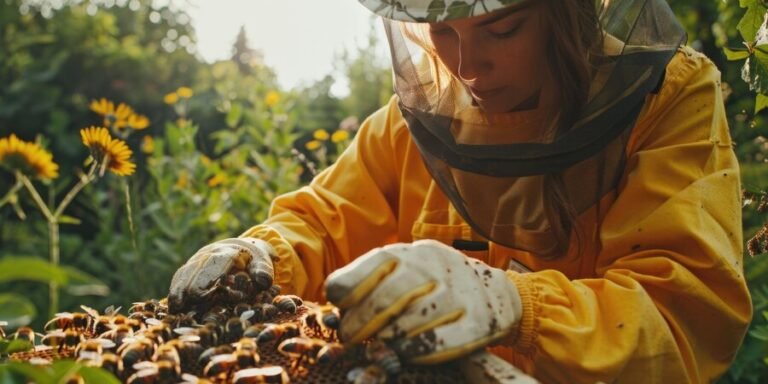Sustainable Alternatives to Common Plastics: How to Accelerate the Transition to a Plastic-Free Future?
Introduction
Plastic is present in virtually every aspect of modern life. From food packaging to electronic products, its versatility and low cost have driven its global production. However, the environmental impact of this material is devastating. It is estimated that more than 300 million tons of plastic are produced annually, with a significant portion ending up in oceans, forests, and landfills, harming ecosystems and human health.
To reduce this dependency, various sustainable alternatives are gaining traction. But how can we accelerate this transition to a plastic-free future? This article explores viable solutions, addressing innovative materials, habit changes, and policies that can drive a sustainable revolution.
The Problem with Plastic and Its Impacts
Environmental Pollution
Plastic takes hundreds of years to decompose, breaking down into microplastics that pollute oceans and soils. Every year, around 8 million tons of plastic enter the oceans, harming marine life and contaminating the food chain.
Human Health
Studies show that microplastics and chemicals found in plastic can affect human health, causing hormonal disorders and other problems. Exposure to substances such as bisphenol A (BPA) has been linked to serious diseases, including cancer and metabolic disorders.
Excessive Consumption and Waste
The “disposable culture” causes tons of plastic to be used only once and discarded. Cups, cutlery, bags, and packaging are some of the main culprits, which could easily be replaced by more sustainable options.
Sustainable Alternatives to Plastic
The search for sustainable alternatives has led to the creation of innovative materials. Check out some efficient and accessible options that can replace plastic:
1. Bioplastics
Bioplastics are one of the most promising alternatives. Made from renewable materials, such as cornstarch, sugarcane, and cellulose, these plastics are biodegradable and have a lower environmental impact. Although still in development, many bioplastics are already available on the market, offering a viable option for packaging and disposable utensils.
2. Paper and Cardboard
Using paper and cardboard is a simple and effective solution to replace plastics in packaging and bags. Both are biodegradable and recyclable, in addition to being produced from renewable sources. Opting for recycled paper or paper from sustainable forests helps reduce deforestation and promotes a circular economy.
3. Glass
Glass is an excellent alternative for storing food and beverages. It is durable, recyclable, and does not release harmful chemicals, unlike some plastics. Additionally, glass can be reused multiple times, reducing the need for new materials. Its long lifespan makes it a smart choice for a sustainable lifestyle.
4. Metal
Materials like aluminum and stainless steel are ideal options to replace plastics in bottles and kitchen utensils. Aluminum, for example, is lightweight and can be recycled indefinitely without losing quality. Metal packaging is an excellent choice for food and beverages, as it provides superior protection and durability.
5. Natural Fabrics
To replace plastic bags and wraps, natural fabrics like cotton, linen, and jute are sustainable alternatives. These materials are biodegradable and can be used repeatedly, reducing the demand for disposable plastics. Additionally, investing in organic fabric products supports sustainable agricultural practices.
6. Edible Products
An innovative alternative is edible products made from seaweed and other natural ingredients. Edible bags and packaging are gaining popularity in the market, offering an interesting solution to plastic pollution. These options not only reduce waste but also provide a unique consumer experience.
How to Accelerate the Transition to a Plastic-Free Future?
Replacing plastic with sustainable materials requires changes in different sectors of society. Here are some strategies that can drive this transition:
1. Public Policies and Regulations
Governments worldwide are implementing laws to reduce the use of single-use plastics. Taxes on disposable plastics and incentives for sustainable companies are effective measures.
2. Awareness and Environmental Education
Awareness campaigns are essential to inform the population about the impacts of plastic and encourage the adoption of sustainable alternatives.
3. Innovation and Technology
Investments in research and development of new sustainable materials help make these alternatives more accessible and effective.
4. Adoption of Sustainable Habits
Each individual can contribute by reducing plastic consumption and choosing sustainable products in everyday life. Small actions, such as carrying reusable bags and avoiding excessive packaging, make a difference.
5. Corporate Responsibility
Companies need to make real commitments to sustainability, eliminating unnecessary plastics and investing in sustainable solutions.
Conclusion
The transition to a plastic-free future is a challenge, but it is possible with joint efforts from governments, industries, and consumers. Sustainable alternatives such as bioplastics, glass, metal, and natural fabrics are already available and should be widely adopted to reduce environmental impact.
Every action counts. Small habit changes can make a big difference in the fight against plastic pollution. By choosing sustainable alternatives, we are investing in a cleaner and healthier planet for future generations. The time to act is now! Let’s work together to accelerate this transition to a plastic-free future.







